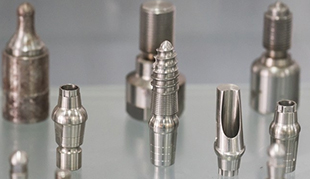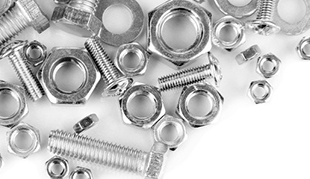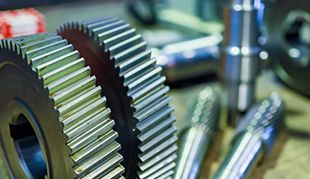Advancing Aerospace Technology with Metal Injection Molding
Metal Injection Molding (MIM) is a revolutionary manufacturing process that has been gaining significant attention in various industries, including aerospace. Combining the benefits of traditional powder metallurgy with plastic injection molding, MIM offers a cost-effective and efficient solution for producing complex metal components with high precision. Then we will explore the applications of Metal Injection Molding in the aerospace sector and how it has contributed to the advancement of aerospace technology.
Lightweight Components for Enhanced Performance:
In the aerospace industry, weight reduction is a crucial factor in enhancing overall performance. MIM enables the production of lightweight yet robust components, making it an ideal solution for aircraft and spacecraft manufacturing. The ability to design intricate geometries and thin-walled structures allows engineers to optimize parts, leading to improved fuel efficiency and payload capacity.

Complex Geometry and Design Freedom:
Aerospace applications often demand components with intricate shapes and complex geometries. MIM technology enables the production of such parts with ease, which may be challenging or impossible with conventional manufacturing methods. This design flexibility unlocks new possibilities in component design, leading to improved aerodynamics, thermal management, and overall system performance.
Cost-Effectiveness and Time Efficiency:
Manufacturing aerospace-grade components can be costly and time-consuming. MIM addresses these challenges by streamlining the production process and reducing material wastage. The ability to produce multiple complex parts in a single MIM cycle significantly cuts down on labor and tooling costs, making it an attractive choice for high-volume production.
Superior Material Properties:
MIM offers an extensive range of material options, including stainless steel, titanium, nickel-based superalloys, and more. These materials exhibit exceptional properties such as high strength, corrosion resistance, and excellent mechanical performance. By using MIM, aerospace engineers can choose the most suitable material for specific applications, ensuring optimal performance and durability of the final components.

Consistency and Quality Control:
In the aerospace industry, maintaining stringent quality control is vital to ensure the safety and reliability of aircraft and spacecraft. MIM's automated manufacturing process and reduced human intervention result in improved consistency and better quality control. Furthermore, MIM reduces the risk of defects and material impurities, enhancing the reliability of the final product.
Rapid Prototyping and Iterative Design:
Developing new aerospace components often involves multiple iterations and prototyping stages. MIM's quick turnaround time allows for rapid prototyping, enabling engineers to test and refine designs more efficiently. This iterative design process ultimately leads to optimized components that meet or exceed performance requirements.
Environmental Sustainability:
Aerospace companies are increasingly seeking eco-friendly manufacturing processes to align with environmental goals. MIM is considered a greener alternative compared to traditional machining methods due to its reduced material waste and energy consumption. Moreover, MIM often uses recycled materials, making it an environmentally responsible choice for aerospace manufacturing.
Metal Injection Molding (MIM) has emerged as a game-changing technology in the aerospace industry, providing cost-effective, lightweight, and high-performance solutions for complex metal components. From lightweight structures to intricate geometries and rapid prototyping, MIM has contributed significantly to the advancement of aerospace technology. Its ability to produce superior-quality parts with improved material properties and reduced environmental impact makes it a favored choice for aerospace manufacturers looking to enhance their products and stay ahead in the competitive aerospace landscape.
By leveraging the potential of MIM, aerospace companies can continue pushing the boundaries of innovation and bring us closer to a new era of high-performance, efficient, and eco-friendly air and space travel.






